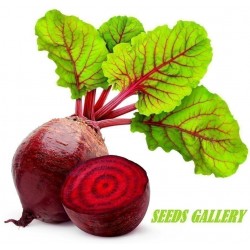Menu
-
MenuНазад
- Home
-
Категории
-
-
Категории
-
Растительные Семена
-
Сорта по стране
- Сорта из Армении
- Сорта из БиГ
- Сорта из Хорватии
- Сорта из Франции
- Сорта из Германии
- Сорта из Греции
- Сорта из Венгрии
- Сорта из Индии
- Сорта из Италии
- Сорта из Японии
- Сорта из Северной Македонии
- Сорта из Перу
- Сорта из россии
- Сорта из Сербии
- Сорта из Словении
- Сорта из Испании
- Сорта из Тайланда
- Сорта из Турции
- Сорта из США
- Семена томатов
- Семена кукурузы
- Семья тыквы
- Бобовая семья
- Семена огурца
- Семена перца
- Морковная семья
- Луковая семья
- Семена салата
- Картофельная семья
- Капустная семья
- Семена редьки
- Семья свеклы
- Семена Aрбуза
- Семена Дыни
- Цветная капуста Семена
- Подсолнечное семейство
-
Сорта по стране
- Фруктовые Семена
- Семена Перец Чили - Habanero
- Лекарственные травы Семена
- Вьющиеся растения семена
- Деревья Бонсай Семена
- Пальмовые семена
- Семена декоративных трав
- Семена табака
-
Растительные Семена
-
-
-
-
- НОВЫЕ ПРОДУКТЫ
- Доставка - Оплата
- Регистрация
- FAQ
Последние отзывы к продукту
Out of the two seeds, one germinated and the other one was dead and floatin...
От
 Riikka H на 07/03/2024
Riikka H на 07/03/2024
Проверенная покупка
Семья свеклы
Товаров: 23.
Показано 1-15 из 23

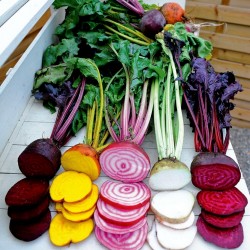
Семена свеклы Радуга
Базовая цена
2,00 €
-15%
Цена
1,70 €
(SKU: VE 223)
Seeds Gallery EU,
5/
5
<!DOCTYPE html>
<html>
<head>
<meta http-equiv="Content-Type" content="text/html; charset=UTF-8" />
</head>
<body>
<h2><strong>Семена свеклы Радуга</strong></h2>
<h2><span style="color: #ff0000;"><strong>Price for Package of 55+- (1g) seeds.</strong></span></h2>
<p>Визуально ошеломляющая смесь пяти сортов свеклы с выдающейся контрастной внешней оболочкой, мясом, стеблями и листьями! Каждый сорт имеет сладкий вкус и может наслаждаться спелыми корнями в течение всего лета.</p>
<p>Восхитительный, будь то приготовленный, холодный или зимний, его даже можно нарезать сырыми в салаты для еще более красивого внешнего вида. Попробуйте приготовить ее листовые листья как альтернативу шпинату или мангольду.</p>
<p>Сеять 1 см в ряд на расстоянии 30 см друг от друга</p>
<p>Предварительное замачивание семян в теплой воде за 1 час до посева ускорит прорастание.</p>
<p>Высота: 30 см (12 дюймов).</p>
<p>Ширина: 15 см (6 дюймов).</p>
</body>
</html>
VE 223 (1g)

- -15%
- Новое
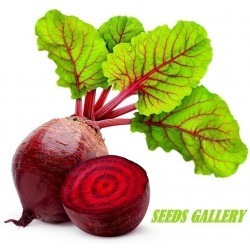
Beetroot 100 Seeds - Egyptian
Базовая цена
1,15 €
-15%
Цена
0,98 €
(SKU: VE 230)
Seeds Gallery EU,
5/
5
<h2 class=""><strong>100 Seeds Egyptian Beetroot (Beta vulgaris)</strong></h2>
<h2 class=""><span style="color: #ff0000;"><strong>Price for Package of 100 seeds.</strong></span></h2>
<div>Heirloom variety dating back to 1800’s that produces a flattish beetroot with dark red flesh that has lighter zones. Excellent old fashioned flavour, eaten raw or cooked. Delicious edible tops</div>
<div>stay green and can be used as spinach or in salads. Early variety. 55 days.</div>
<script src="//cdn.public.n1ed.com/G3OMDFLT/widgets.js"></script>
VE 230 (1,5g)

- -15%
- Новое
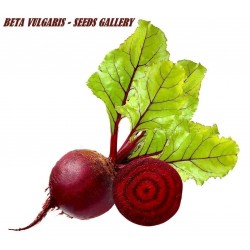
Beetroot Seeds 'Monika'
Базовая цена
1,35 €
-15%
Цена
1,15 €
(SKU: VE 33 (1g))
Seeds Gallery EU,
5/
5
<h2><span style="text-decoration: underline;" class=""><em><strong>Beetroot Seeds 'Monika' (Beta vulgaris)</strong></em></span></h2>
<h3><span style="color: #ff0000;"><strong>Price for Package of 100 seeds.</strong></span></h3>
<div>A splendid variety with so many advantages. Virtually no thinning is required, being a monogerm type, and it is also highly bolt-resistant. Perfect for both early and later sowings, we love the baby beets pickled in sweet vinegar.</div>
<div>How to grow Beetroot:</div>
<div>Beetroot are remarkably easy to grow and can be grown across a wide range of climates. It prefers moist, sunny conditions with not excessive heat. It is sown as a warm season crop in most regions, but performs best during the cooler, drier months in tropical zones where it may prefer some shade in summer conditions</div>
<div>Beetroot can be sown from very early in the season until late and can be grown in raised beds or containers all year round. Sow the seeds closer together for cutting and use in baby leaf salads, they can be constantly thinned, as you need them throughout the growing period. The young shoots are also deliciously sweet. </div>
<div>Beetroot seeds are clustered together with each cork-like fruit containing two or three seeds. Once germinated, they require thinning out early to avoid root disturbance. (Some varieties have been bred to only produce one seed and are called 'Monogerm' seeds).</div>
<div>Position:</div>
<div>Beetroot prefer to be grown in light, sandy soil in a sunny position, but can tolerate pretty much any sort of soil and some shade will be tolerated, a pH of 6.0-7.0 is fine but if you know your soil is too acid dig in some lime. </div>
<div>Dig over the site with a spade (preferably in the autumn prior to sowing). Remove perennial weeds and large stones as these can cause the roots to become mis-shapen</div>
<div>Level roughly and then work over the area with a rake to leave a fine finish. If you can, two or three weeks before sowing, spread a general granular fertiliser across the site and rake into the soil. Do not add manure to the soil as this will cause the roots to develop incorrectly.</div>
<div>When to sow Beetroot: Late spring to autumn.</div>
<div>Beetroots can be grown from early spring onwards if grown indoors or undercover. </div>
<div>Seeds can be planted directly into the ground after the threat of frost has passed. Beetroots are best planted at soil temperatures between 7°C and 25°C. The best quality beetroots are grown at temperatures of 10 to 18°C (50 to 65°F).The crops will tolerate light frost.</div>
<div>How to sow Beetroot:</div>
<div>The seeds require plenty of moisture to germinate. Soaking them in warm water for an hour or two prior to planting is a great way to speed up germination. Expected germination time 10 to 14 days. </div>
<div>Prevent a glut when planting beetroot by sowing your seed in stages, a small batch at a time every couple of weeks will give a continuous harvest.</div>
<div>Sowing Indoors: From February</div>
<div>Sow 2 or 3 seeds per pot, at a depth of 25mm (1in). When the seedlings emerge there may be more than one from each seed cluster. When they are about 5cm (2in) tall, carefully separate these into individual plants prior to planting out (only transplant the strongest seedlings). This will avoid seedlings competing with one another and prevent a distorted, misshapen harvest. </div>
<div>Successful transplanting can be carried out as soon as plants have formed their first true leaves. Unlike other root crops, beetroot seedlings transplant reasonably well providing they are not too large and are kept moist when transplanting.</div>
<div>Sowing Direct: From May</div>
<div>It is best to sow beetroot seeds directly into the ground when the temperature of the soil has warmed to about 7°C (44°F). Sow thinly in prepared seed beds. Where plants are sown direct it is important to thin the multiple seedlings back to one plant. If carefully removed, the thinnings can be transplanted to form additional rows.</div>
<div>The spacing is quite important. If you wish to grow small, pickling size beets, they need to be sown quite close together, about 5cm (2in) apart, in rows 15cm (6in) apart. If you wish to grow standard size beetroots, then sow about 10cm (4in) apart, in rows that are at least 30cm (12in) apart.</div>
<div>Cover lightly with 25mm (1in) of fine soil. Firm gently, water well and keep moist. </div>
<div>Seedlings appear in 7 to 21 days. When large enough thin to at least 10cm (4in) apart.</div>
<div>Cultivation: </div>
<div>Keep the rows weed free and the seedlings well watered. Once the roots have developed and they start to swell, beetroots need to be watered moderately. Beetroot has shallow roots and it is important to keep the plants moist. If they experience long dry periods, the beetroot will become hairy and fibrous. Intermittent or inadequate watering can result in stress cracks and breakdown of roots. Don't overwater as this only encourages leaf growth and not bulb growth. </div>
<div>During cool weather, the plants can be watered once a week. During very hot weather, less water can be given two to three times a week instead of a lot of water once a week.</div>
<div>Companion Planting: </div>
<div>Good Companions - Onions, Silverbeet, Kohlrabi, Lettuce, Cabbage, Dwarf Beans. Aromatic Herbs, Celery, Chamomile, Spinach, Chard.</div>
<div>Bad Companions - tall beans, runner beans.</div>
<div>Common Problems: </div>
<div>Boron deficiency is sometimes seen in root vegetable crops. This causes leaf yellowing and scorching. It is very rare if general purpose fertiliser is used that includes trace elements such as boron, magnesium, manganese, iron and molybdenum.</div>
<div>Fungal leaf spots and rust sometimes occur on beetroot leaves. These are worse when plants are poorly grown (lack of sun, water and nutrients) or planted at the wrong time of year. Avoid growing beetroot during most humid time of the year in tropical regions, improve air circulation, reduce nitrogen applications and avoid excessive wetting of the foliage. Apply seaweed sprays to build disease resistance and supply trace elements.</div>
<div>Slugs or snails may eat the leaves. Repellent molasses or chilli spray, or barriers and traps to control slugs and snails may be required in extreme cases.</div>
<div>Propagation:</div>
<div>Beetroot are both wind and insect pollinated; they will cross with silverbeet, chard and other beets. </div>
<div>Plants are biennial, producing vegetative growth in the first season and flowers and seed in the second. If plants bolt, eat do not allow to go to seed.</div>
<div>Do not have two varieties in flower at the same time or isolate plants to keep different strains pure. Where possible, allow at least three to four plants of one variety that show good growth and disease resistance for flowering and seed production.</div>
<div>Harvesting: </div>
<div>Beetroot is ready to be picked when the roots are between the size of a golf ball and a tennis ball – this is usually 12 to 16 weeks after sowing. The smaller the root the better the quality. </div>
<div>Pull from all along the row and not just in one place, as this thins out the rows, allowing more space for the other beetroot to grow. To harvest, gently hold the tops and lift while levering under the root with a hand fork. Remove the tops by twisting them off with your hands to prevent the plants bleeding their juice – don’t throw these away, they have bags of taste and can be cooked and eaten like spinach. Store roots in dry sand, soil, or peat for winter use.</div>
<div>Culinary Uses:</div>
<div>Before cooking beets, cut off the tops within a couple of inches of the top. This helps lock in the nutrients during cooking. When the tops are attached to any root vegetable, they leech the nutrients from the root. They should be cooked whole and then peeled; otherwise, they bleed all their colour and nutrients into the water. </div>
<div>The deep-red roots are eaten Boiled, steamed or roasted as a vegetable (if roasted, cover with lemon juice to stop browning). They can be eaten cold as a salad after cooking and adding oil and vinegar, or raw and shredded. </div>
<div>A large proportion of commercial production is processed into boiled and sterilised beets or into pickles. In Eastern Europe beet soup, such as cold borscht, is a popular dish. Beetroot leaves are lovely in a salad or cooked. Use as you would spinach.</div>
<div>Beetroot can easily be stored for later use, and the most common method is by pickling them in vinegar.</div>
<div>Storing:</div>
<div>The greens and the roots should be stored separately as the greens are highly perishable, but the roots can last for some time in storage. Another method to store beetroot is pickling and making chutney.</div>
<div>Other Uses:</div>
<div>Beetroot is known for staining the tablecloth, but can be used to make an excellent natural dye. It gives a fantastic range of colours, from yellow, through reds to browns, dependent on the type of mordant used. Within older bulbs of beetroot, the colour is a deeper crimson and the flesh is much softer. Beetroot dye may also be used in ink.</div>
<div>Betanin, obtained from the roots, is used industrially as red food colourants, e.g. to improve the colour of tomato paste, sauces, desserts, jams and jellies, ice cream, sweets and breakfast cereals.</div>
<div>Origin:</div>
<div>Beetroot are biennial plants grown as annuals and harvested for their swollen root tuber and leaves. The type of wild plant from which it came, had thin, poor roots and was native to the Mediterranean but spread eastwards into West Asia. It was known as a vegetable as early as 300 BC but was only introduced into Germany and Britain around the sixteenth century.</div>
<div>Beetroots are related to the sugar beet and to swiss chard, the foliage beets that are grown for the greens and not the root.</div>
<div>History: </div>
<div>From the Middle Ages, beetroot was used as a treatment for a variety of conditions, especially illnesses relating to digestion and the blood. Platina recommended taking beetroot with garlic to nullify the effects of 'garlic-breath'.</div>
<div>Since Roman times, beetroot juice has been considered an aphrodisiac and natural Viagra. </div>
<div>It is a rich source of the element boron, which plays an important role in the production of human sex hormones. Field Marshal Montgomery is reputed to have exhorted his troops to 'take favours in the beetroot fields', a euphemism for visiting prostitutes.</div>
<script src="//cdn.public.n1ed.com/G3OMDFLT/widgets.js"></script>
VE 33 (1g)

- -15%
- Новое
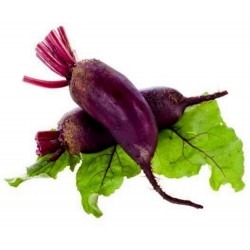
Beetroot Seeds Cylindra
Базовая цена
1,95 €
-15%
Цена
1,66 €
(SKU: VE 31 (1g))
Seeds Gallery EU,
5/
5
<div class="container">
<div class="row">
<div class="col-12">
<h2><span style="text-decoration: underline;" class=""><em><strong>Beetroot Seeds “Cylindra” (Beta vulgaris var. crassa)</strong></em></span></h2>
<h3><span style="color: #ff0000;"><strong>Price for Package of 100 seeds.</strong></span></h3>
<div>Beetroot Cylindra, as its name suggests is a cylindrical (half-long or stump-rooted) beetroot. Smooth-skinned with dark purple-red flesh, it grows a dark red, elongated root 7 to 10cm (6 to 8in) long. </div>
<div>This unique variety has a very fine, smooth texture with little fibre, the root maintains its sweetness and tenderness over a long growing season and does not get woody. </div>
<div>The roots are sweet with an earthy-caramel taste, especially lovely when roasted. The roots stand proud above the soil, but can be earthed up, and remain in good condition a long period. The red-green leaves are sweeter and more “beety” tasting than other beet leaves.</div>
<div>Beetroot Cylindra matures medium early, a little more slowly than globe-shaped beetroot, but because of its cylindrical root shape can be and can be spaced more closely together, making it productive in small spaces. Because of its uniform width, it is ideal for cutting into uniform slices (it is sometimes called Butter Slicer), perfect for slicing, pickling and canning. </div>
<div>There are quite a number of myths about this beautiful beetroot.</div>
<div>Some sources, both on the web and printed in books, state that Cylindra is an old English or Danish variety. ('recorded by 1840 and widely grown by 1880'.), but Cylindra is apparently a relatively young beetroot. It was first brought to market and entered in a French catalogue in 1968-69. We have not managed to find earlier references, which mentions Cylindra.</div>
<div>Several sources also refer to Cylindra being synonymous with Formanova, again, we have not managed to find sources, which have confirmed this.</div>
<div>How to grow Beetroot:</div>
<div>Beetroot are remarkably easy to grow and can be grown across a wide range of climates. It prefers moist, sunny conditions with not excessive heat. It is sown as a warm season crop in most regions, but performs best during the cooler, drier months in tropical zones where it may prefer some shade in summer conditions</div>
<div>Beetroot can be sown from very early in the season until late and can be grown in raised beds or containers all year round. Sow the seeds closer together for cutting and use in baby leaf salads, they can be constantly thinned, as you need them throughout the growing period. The young shoots are also deliciously sweet. </div>
<div>Beetroot seeds are clustered together with each cork-like fruit containing two or three seeds. Once germinated, they require thinning out early to avoid root disturbance. (Some varieties have been bred to only produce one seed and are called 'Monogerm' seeds).</div>
<div>Position:</div>
<div>Beetroot prefer to be grown in light, sandy soil in a sunny position, but can tolerate pretty much any sort of soil and some shade will be tolerated, a pH of 6.0-7.0 is fine but if you know your soil is too acid dig in some lime. </div>
<div>Dig over the site with a spade (preferably in the autumn prior to sowing). Remove perennial weeds and large stones as these can cause the roots to become mis-shapen</div>
<div>Level roughly and then work over the area with a rake to leave a fine finish. If you can, two or three weeks before sowing, spread a general granular fertiliser across the site and rake into the soil. Do not add manure to the soil as this will cause the roots to develop incorrectly.</div>
<div>When to sow Beetroot: Late spring to autumn.</div>
<div>Beetroots can be grown from early spring onwards if grown indoors or undercover. </div>
<div>Seeds can be planted directly into the ground after the threat of frost has passed. Beetroots are best planted at soil temperatures between 7°C and 25°C. The best quality beetroots are grown at temperatures of 10 to 18°C (50 to 65°F).The crops will tolerate light frost.</div>
<div>How to sow Beetroot:</div>
<div>The seeds require plenty of moisture to germinate. Soaking them in warm water for an hour or two prior to planting is a great way to speed up germination. Expected germination time 10 to 14 days. </div>
<div>Prevent a glut when planting beetroot by sowing your seed in stages, a small batch at a time every couple of weeks will give a continuous harvest.</div>
<div>Sowing Indoors: From February</div>
<div>Sow 2 or 3 seeds per pot, at a depth of 25mm (1in). When the seedlings emerge there may be more than one from each seed cluster. When they are about 5cm (2in) tall, carefully separate these into individual plants prior to planting out (only transplant the strongest seedlings). This will avoid seedlings competing with one another and prevent a distorted, misshapen harvest. </div>
<div>Successful transplanting can be carried out as soon as plants have formed their first true leaves. Unlike other root crops, beetroot seedlings transplant reasonably well providing they are not too large and are kept moist when transplanting.</div>
<div>Sowing Direct: From May</div>
<div>It is best to sow beetroot seeds directly into the ground when the temperature of the soil has warmed to about 7°C (44°F). Sow thinly in prepared seed beds. Where plants are sown direct it is important to thin the multiple seedlings back to one plant. If carefully removed, the thinnings can be transplanted to form additional rows.</div>
<div>The spacing is quite important. If you wish to grow small, pickling size beets, they need to be sown quite close together, about 5cm (2in) apart, in rows 15cm (6in) apart. If you wish to grow standard size beetroots, then sow about 10cm (4in) apart, in rows that are at least 30cm (12in) apart.</div>
<div>Cover lightly with 25mm (1in) of fine soil. Firm gently, water well and keep moist. </div>
<div>Seedlings appear in 7 to 21 days. When large enough thin to at least 10cm (4in) apart.</div>
<div>Cultivation: </div>
<div>Keep the rows weed free and the seedlings well watered. Once the roots have developed and they start to swell, beetroots need to be watered moderately. Beetroot has shallow roots and it is important to keep the plants moist. If they experience long dry periods, the beetroot will become hairy and fibrous. Intermittent or inadequate watering can result in stress cracks and breakdown of roots. Don't overwater as this only encourages leaf growth and not bulb growth. </div>
<div>During cool weather, the plants can be watered once a week. During very hot weather, less water can be given two to three times a week instead of a lot of water once a week.</div>
<div>Companion Planting: </div>
<div>Good Companions - Onions, Silverbeet, Kohlrabi, Lettuce, Cabbage, Dwarf Beans. Aromatic Herbs, Celery, Chamomile, Spinach, Chard.</div>
<div>Bad Companions - tall beans, runner beans.</div>
<div>Common Problems: </div>
<div>Boron deficiency is sometimes seen in root vegetable crops. This causes leaf yellowing and scorching. It is very rare if general purpose fertiliser is used that includes trace elements such as boron, magnesium, manganese, iron and molybdenum.</div>
<div>Fungal leaf spots and rust sometimes occur on beetroot leaves. These are worse when plants are poorly grown (lack of sun, water and nutrients) or planted at the wrong time of year. Avoid growing beetroot during most humid time of the year in tropical regions, improve air circulation, reduce nitrogen applications and avoid excessive wetting of the foliage. Apply seaweed sprays to build disease resistance and supply trace elements.</div>
<div>Slugs or snails may eat the leaves. Repellent molasses or chilli spray, or barriers and traps to control slugs and snails may be required in extreme cases.</div>
<div>Propagation:</div>
<div>Beetroot are both wind and insect pollinated; they will cross with silverbeet, chard and other beets. </div>
<div>Plants are biennial, producing vegetative growth in the first season and flowers and seed in the second. If plants bolt, eat do not allow to go to seed.</div>
<div>Do not have two varieties in flower at the same time or isolate plants to keep different strains pure. Where possible, allow at least three to four plants of one variety that show good growth and disease resistance for flowering and seed production.</div>
<div>Harvesting: </div>
<div>Beetroot is ready to be picked when the roots are between the size of a golf ball and a tennis ball – this is usually 12 to 16 weeks after sowing. The smaller the root the better the quality. </div>
<div>Pull from all along the row and not just in one place, as this thins out the rows, allowing more space for the other beetroot to grow. To harvest, gently hold the tops and lift while levering under the root with a hand fork. Remove the tops by twisting them off with your hands to prevent the plants bleeding their juice – don’t throw these away, they have bags of taste and can be cooked and eaten like spinach. Store roots in dry sand, soil, or peat for winter use.</div>
<div>Culinary Uses:</div>
<div>Before cooking beets, cut off the tops within a couple of inches of the top. This helps lock in the nutrients during cooking. When the tops are attached to any root vegetable, they leech the nutrients from the root. They should be cooked whole and then peeled; otherwise, they bleed all their colour and nutrients into the water. </div>
<div>The deep-red roots are eaten Boiled, steamed or roasted as a vegetable (if roasted, cover with lemon juice to stop browning). They can be eaten cold as a salad after cooking and adding oil and vinegar, or raw and shredded. </div>
<div>A large proportion of commercial production is processed into boiled and sterilised beets or into pickles. In Eastern Europe beet soup, such as cold borscht, is a popular dish. Beetroot leaves are lovely in a salad or cooked. Use as you would spinach.</div>
<div>Beetroot can easily be stored for later use, and the most common method is by pickling them in vinegar.</div>
<div>Storing:</div>
<div>The greens and the roots should be stored separately as the greens are highly perishable, but the roots can last for some time in storage. Another method to store beetroot is pickling and making chutney.</div>
<div>Other Uses:</div>
<div>Beetroot is known for staining the tablecloth, but can be used to make an excellent natural dye. It gives a fantastic range of colours, from yellow, through reds to browns, dependent on the type of mordant used. Within older bulbs of beetroot, the colour is a deeper crimson and the flesh is much softer. Beetroot dye may also be used in ink.</div>
<div>Betanin, obtained from the roots, is used industrially as red food colourants, e.g. to improve the colour of tomato paste, sauces, desserts, jams and jellies, ice cream, sweets and breakfast cereals.</div>
<div>Origin:</div>
<div>Beetroot are biennial plants grown as annuals and harvested for their swollen root tuber and leaves. The type of wild plant from which it came, had thin, poor roots and was native to the Mediterranean but spread eastwards into West Asia. It was known as a vegetable as early as 300 BC but was only introduced into Germany and Britain around the sixteenth century.</div>
<div>Beetroots are related to the sugar beet and to swiss chard, the foliage beets that are grown for the greens and not the root.</div>
<div>History: </div>
<div>From the Middle Ages, beetroot was used as a treatment for a variety of conditions, especially illnesses relating to digestion and the blood. Platina recommended taking beetroot with garlic to nullify the effects of 'garlic-breath'.</div>
<div>Since Roman times, beetroot juice has been considered an aphrodisiac and natural Viagra. </div>
<div>It is a rich source of the element boron, which plays an important role in the production of human sex hormones. Field Marshal Montgomery is reputed to have exhorted his troops to 'take favours in the beetroot fields', a euphemism for visiting prostitutes.</div>
</div>
</div>
</div><script src="//cdn.public.n1ed.com/G3OMDFLT/widgets.js"></script>
VE 31 (1g)

- -15%
- Новое
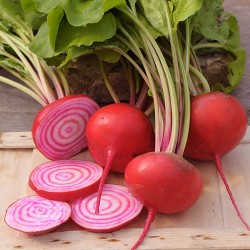
Свекла Кьоджа семена
Базовая цена
1,55 €
-15%
Цена
1,32 €
(SKU: VE 123)
Seeds Gallery EU,
5/
5
<h2><strong>Свекла Кьоджа семена</strong></h2>
<h2><span style="color: #ff0000;"><strong>Цена за пакет из 15 семян.</strong></span></h2>
<p>Эта уникальная, необычайно красивая свекла была выведена в Италии в 1840 году. Снаружи она обычная, бордовая. А вот мякоть у нее с красивыми красными и белыми полосками. Очень нежная, мягкая и сладкая! В салатах она смотрится просто изумительно!</p>
<p>Созревает 60 дней.</p>
<p><strong>Посев.</strong> Семена высевают в открытый грунт в конце апреля – начале мая на глубину 2–4 см. Либо под зиму, в начале ноября, в заранее подготовленные грядки.</p>
<p>Схема посева: в ряду – 8–10 см, между рядами – 25–30 см.</p>
VE 123 (15 S)

- -15%
- Новое
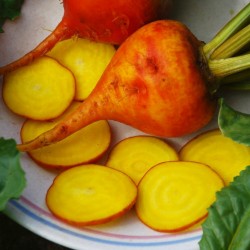
Золотая свекла семена...
Базовая цена
1,95 €
-15%
Цена
1,66 €
(SKU: VE 35 GB)
Seeds Gallery EU,
5/
5
<meta http-equiv="Content-Type" content="text/html; charset=UTF-8" />
<h2><strong>Золотая свекла семена Golden Detroit</strong></h2>
<h2><span style="color: #ff0000;"><strong>Price for Package of 25 seeds.</strong></span></h2>
<p>Это продуктивная разновидность золотисто-желтой свеклы, которая дает чрезвычайно крупные плоды, восхитительный вкус, золотисто-желтый цвет, сохраняемый при приготовлении. Он используется в качестве обычной свеклы и может быть использован как для сладкого, так и для приготовления многих других блюд, а также для приготовления.</p>
<p>Его главным преимуществом является вкус, который приятен в отличие от обильного вкуса обычной свеклы. Зрелые корни не становятся волокнистыми.</p>
<p>От этой свеклы ваши руки не будут окрашены, как обычная свекла.</p>
<p>Кроме того, листья можно собирать и использовать в качестве шпината в течение всего сезона. Хорошая устойчивость к болтованию (Что такое Болтинг? Когда растение переходит в цветение, вкусы растения меняются) и хорошо хранится.</p>
<p>Время созревания: 55 дней.</p>
<p>Если вы будете сеять через каждые несколько недель в течение лета, вы будете получать эти овощи до конца лета.</p>
<p>Сеять семена весной после последних заморозков.</p>
<p>Сеять 1 см в ряд на расстоянии 30 см друг от друга.</p>
<p>Предварительное замачивание семян в теплой воде за 1 час до посева ускорит прорастание.</p>
VE 35 GB (25 S)

- -15%
- Новое
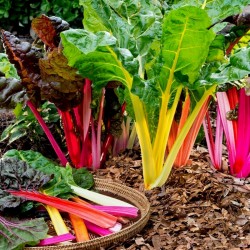
Семена мангольд Радуга
Базовая цена
1,90 €
-15%
Цена
1,62 €
(SKU: VE 11 (1g))
Seeds Gallery EU,
5/
5
<!DOCTYPE html>
<html>
<head>
<meta http-equiv="Content-Type" content="text/html; charset=UTF-8" />
</head>
<body>
<h2>Семена мангольд Радуга</h2>
<h3><span style="color: #ff0000;"><strong>Цена за пакет из 55 + - (1г) семян.</strong></span></h3>
<p>Радужный мангольд, который чрезвычайно популярен не только благодаря своим насыщенным цветам! Остается немного меньше, чем белый швейцарский мангольд, но более устойчив и выдерживает зимнюю защиту даже при посадке на улице. Наружные листья собирают, если позволяет погода, это можно сделать до конца ноября. Стебли могут быть приготовлены или приготовлены на пару как овощи, молодые листья также предназначены для потребления в сыром виде, например. лучше всего подходит для салатов. Из-за своего цвета он также привлекает внимание как декоративное растение на многолетней границе. Он должен находиться в солнечном месте на свежей влажной почве.</p>
<p>Происхождение: Франция</p>
<p>Время созревания: 70 дней (среднеранний)</p>
<p>Листья: от средних до 40 см.</p>
<p>Высота растения: 50 см</p>
</body>
</html>
VE 11 (1g)

- -15%
- Новое
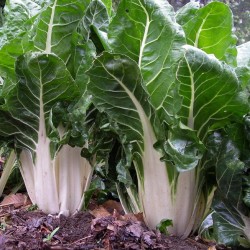
Мангольд Белый семена...
Базовая цена
1,45 €
-15%
Цена
1,23 €
(SKU: VE 99 (1,9g))
Seeds Gallery EU,
5/
5
<h2 class=""><strong>Мангольд Белый семена (White Silver)</strong></h2>
<h2><span style="color: #ff0000;"><strong>Цена за упаковку из 100 (1,9 г) или 1600 (20 г) семян.</strong></span></h2>
<p>Мангольд - это разновидность листовой свёклы, выведенная в Швеции. Сорт среднеспелый. Розетка листьев мощная, прямостоячая. Лист крупный, длиной 20-25 см, бело-зелёной окраски. Черешки белые, длиной 25-30 см. Черешки и листья богаты органическими кислотами, витаминами и минералами. Зелень мангольда используется для приготовления салатов, борщей, тушеных блюд. Растение ценится за высокие вкусовые, диетические и лечебные качества.</p>
<p>Срок созревания: 40 дней<br>Высота растения: 50-60 см</p>
<script src="//cdn.public.n1ed.com/G3OMDFLT/widgets.js"></script>
VE 99 (1,9g)

- -15%
- Новое

Гигантское растение (с гигантскими плодами)
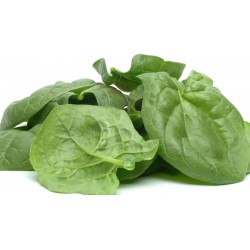
Семена шпината ГИГАНТСКИЙ...
Базовая цена
2,15 €
-15%
Цена
1,83 €
(SKU: VE 43 (2g))
Seeds Gallery EU,
5/
5
<h2><strong>Семена шпината ГИГАНТСКИЙ АМЕРИКАНСКИЙ</strong></h2>
<h2><strong><span style="color: #ff0000;" class="">Цена за пакет из 160 (2g) семян.</span></strong></h2>
<p>По-настоящему темно-зеленый шпинат с сильно покрытыми волдырями гигантскими округлыми листьями на полупустых растениях. Тёмно-зелёные сильно вздутые листья Giant American можно собирать в течение летних и осенних месяцев. Очень продуктивный сорт с тонкими, сочными и сладко ароматными листьями.</p>
<p>Создает массу сильно вздутых темно-зеленых листьев.</p>
<p>Урожай летом и осенью.</p>
<p>Подходит для - Овощной участок, приподнятые клумбы, контейнерный сад, ограниченное пространство, оконные коробки</p><script src="//cdn.public.n1ed.com/G3OMDFLT/widgets.js"></script>
VE 43 (2g)

- -15%
- Новое
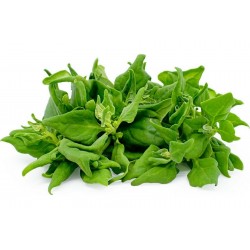
Шпинат новозеландский...
Базовая цена
1,85 €
-15%
Цена
1,57 €
(SKU: P 448 NZ)
Seeds Gallery EU,
5/
5
<h2><strong>Шпинат новозеландский семена (Tetragonia tetragonoides)</strong></h2>
<h2><span style="color:#ff0000;"><strong>Цена за пакет из 5 семян.</strong></span></h2>
<p>Шпинат новозеландский (лат. Tetragonia tetragonoides) - ксерофитные растения, вид рода Тетрагония (Tetragonia) семейства Аизовые (Aizoaceae), широко культивируемый в странах Центральной и Южной Европы и США, как листовой овощ.</p>
<p>В Японии и Америке был известен с давних времен, в Европу попал только в XVIII веке — растение было доставлено в 1770 году в Англию участниками первого кругосветного путешествия капитана Кука. Длительное время выращивался только в ботанических садах, и в XIX столетии вошел в культуру. В России известен с середины XIX столетия.</p>
<p>Однолетнее, влаго- и теплолюбивое растение. Стебли стелющиеся, сильно ветвистые. Длина стеблей до 35 — 45 см, боковых до — 75 — 110 см. Листья толстые, мясистые, темно-зеленого цвета, зубчатые, треугольной формы.</p>
<p>Культивируется как однолетнее растение. На юге России выращивают, сея семена в грунт, в средней полосе - рассадой. В пищу используют побеги длиной до 10 см вместе с мясистыми листьями.</p>
<p>Листья и побеги растения содержит: 1,7 % белка, 0,4 % сахара, 40 мг витамина С, 2,3 мг каротина, 0,16 мг никотиновой кислоты. В старых его листьях накапливается до 240 мг щавелевой кислоты.</p>
<p><strong>Распространение</strong></p>
<p>Родиной растения являются побережья Новой Зеландии и Австралии. Сейчас в диком виде произрастает в Японии, Китае, Чили.</p>
P 448 NZ

- -15%
- Новое
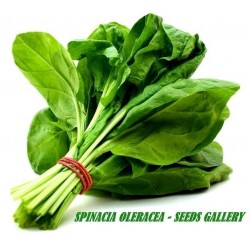
Spinach Seeds Matador
Базовая цена
1,65 €
-15%
Цена
1,40 €
(SKU: VE 26 (2g))
Seeds Gallery EU,
5/
5
<h2><strong>Spinach Seeds Matador</strong></h2>
<h2><span style="color: #ff0000;"><strong>Price for Package of 2g (160) seeds.</strong></span></h2>
<br>
<div>Spinach Matador is an excellent early all round variety with oval and smooth leaves. Slow bolting spinach with a good mildew resistance. Excellent taste and texture, and is very slow to bolt.</div>
<div>Late sowings will last well into winter. This spinach has it all.</div>
<div>Sow the spinach seeds from early spring or in the autumn outside in a prepared bed 1 cm deep. Rich, weel drained soil is recommended. Thin out to 5-10cm apart as the seedlings appear. Water well in dry spells. Harvest the young leaves as required, picking only a few from each plant.</div>
<div>Easy to grow, annual leaf vegetable. Crops for a long period.</div>
<div>Can be sown in the autumn for winter leaves.</div><script src="//cdn.public.n1ed.com/G3OMDFLT/widgets.js"></script>
VE 26 (2g)

- -15%
- Новое
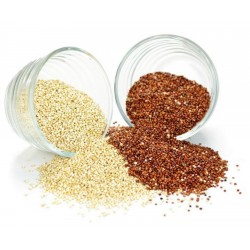
Quinoa Seeds Red or White...
Базовая цена
2,00 €
-15%
Цена
1,70 €
(SKU: VE 232)
Seeds Gallery EU,
5/
5
<div class=""rte""><h2><strong>Quinoa Seeds (Chenopodium quinoa)</strong></h2><h2><span style="color:#ff0000;"><strong>Price for Package of 700+- (2g) seeds.</strong></span></h2><p>Quinoa (/ˈkiːnwɑː/, from Quechua kinwa or kinuwa ) is a species of the goosefoot genus (Chenopodium quinoa), a grain crop grown primarily for its edible seeds. It is a pseudocereal rather than a true cereal, as it is not a member of the true grass family. As a chenopod, quinoa is closely related to species such as beetroots, spinach and tumbleweeds. As a member of the Amaranthaceae family, it is related to and resembles amaranth, which is also a pseudocereal.</p><p>It is high in protein, and is tolerant of dry soil.</p><p>Quinoa (the name is derived from the Spanish spelling of the Quechua name kinwa) originated in the Andean region of Peru, Bolivia, Ecuador, Chile and Colombia, where it was domesticated 3,000 to 4,000 years ago for human consumption, though archaeological evidence shows a non-domesticated association with pastoral herding some 5,200 to 7,000 years ago.</p><p>Similar Chenopodium species, such as pitseed goosefoot (Chenopodium berlandieri) and fat hen (Chenopodium album), were grown and domesticated in North America as part of the Eastern Agricultural Complex before maize agriculture became popular. Fat hen, which has a widespread distribution in the Northern Hemisphere, produces edible seeds and greens much like quinoa, but in smaller quantities.</p><p>The nutrient composition is favourable compared with common cereals. Quinoa seeds contain essential amino acids like lysine and acceptable quantities of calcium, phosphorus, and iron.</p><p>After harvest, the seeds must be processed to remove the coating containing the bitter-tasting saponins. The seeds are in general cooked the same way as rice and can be used in a wide range of dishes. The leaves are eaten as a leaf vegetable, much like amaranth, but commercial availability of quinoa greens is limited.</p><p>Chenopodium quinoa is a dicotyledonous annual plant usually about 1–2 metres (3.3–6.6 ft) high. It has broad, generally pubescent, powdery, smooth (rarely) to lobed leaves normally arranged alternately. The woody central stem is branched or unbranched depending on the variety and may be green, red or purple. The flowering panicles arise from the top of the plant or from leaf axils along the stem. Each panicle has a central axis from which a secondary axis emerges either with flowers (amaranthiform) or bearing a tertiary axis carrying the flowers (glomeruliform). The green hypogynous flowers have a simple perianth and are generally bisexual and self-fertilizing. The fruits are about 2 millimetres (0.079 in) in diameter and of various colours—from white to red or black, depending on the cultivar.</p><p><strong>Natural distribution</strong></p><p>Chenopodium quinoa is believed to have been domesticated in the Peruvian Andes from wild or weed populations of the same species. There are non-cultivated quinoa plants (Chenopodium quinoa var. melanospermum) that grow in the area it is cultivated; these may either be related to wild predecessors, or they could be descendants of cultivated plants.</p><p><strong>Saponin content</strong></p><p>In their natural state, the seeds have a coating of bitter-tasting saponins, making them unpalatable. Most of the grain sold commercially has been processed to remove this coating. This bitterness has beneficial effects during cultivation, as it is unpopular with birds and therefore requires minimal protection. The genetic control of bitterness involves quantitative inheritance; lowering the saponin content through selective breeding to produce sweeter, more palatable varieties is complicated by about 10% cross-pollination.</p><p>The toxicity category rating of quinoa saponins treats them as mild eye and respiratory irritants and as a low gastrointestinal irritant. The saponin is a toxic glycoside, a main contributor to its hemolytic effects when combined directly with blood cells. In South America, quinoa saponin has many uses, including as a detergent for clothing and washing and as an antiseptic for skin injuries. High levels of oxalic acid are in the leaves and stems of all species of the Chenopodium genus, and are also in the related genera of the Amaranthaceae family. The risks associated with quinoa are minimal, provided it is properly prepared and the leaves are not eaten to excess.</p><p><strong>Nutritional value</strong></p><p>Quinoa was important to the diet of pre-Columbian Andean civilizations. Quinoa grain has been called a superfood, a term which is not in common use by dietitians and nutrition scientists. Protein content is very high for a cereal/pseudo-cereal (14% by mass), but not as high as most beans and legumes. This includes a "low gluten content" that appears to be well tolerated when consumed at normal levels by people with celiac disease. The protein content per 100 calories is higher than brown rice, potatoes, barley and millet, but is less than wild rice and oats. Nutritional evaluations indicate that quinoa is a source of complete protein. Other sources claim its protein is not complete but relatively high in essential amino acids. Other pseudo grains derived from seeds are similar in complete protein levels; buckwheat is 18% protein compared to 14% for Quinoa; Amaranth, a related species to Quinoa, ranges from 12% to 17.5%.</p><p>Quinoa is a rich source (>20% of the Daily value, DV) of the B vitamins thiamine, riboflavin, vitamin B6, and folate and is a rich source of the dietary minerals iron, magnesium, phosphorus, and zinc. Quinoa is also a good source (10-19% of DV) of the B vitamins niacin and pantothenic acid, vitamin E, and the dietary mineral potassium. The pseudo cereal contains a modest amount of calcium, and thus is useful for vegans and those who are lactose intolerant. It is gluten-free and considered easy to digest. Because of these characteristics, it is being considered a possible crop in NASA's Controlled Ecological Life Support System for long-duration human occupied space flights.</p><p>The grain may be germinated in its raw form to boost its nutritional value, provided that the grains are rinsed thoroughly to remove any saponin.[26] It has a notably short germination period: only 2–4 hours in a glass of clean water is enough to make it sprout and release gases, as opposed to 12 hours with wheat. This process, besides its nutritional enhancements, softens the seeds, making them suitable to be added to salads and other cold foods.</p><h3><strong>Cultivation</strong></h3><p>The plant's growth is highly variable due to a high complexity of different subspecies, varieties and landraces (domesticated plants or animals adapted to the environment in which they originated). However, in general it is undemanding and altitude-hardy. It is grown from coastal regions to over 4,000 m (13,000 ft) in the Andes near the equator, with most of the cultivars being grown between 2,500 metres (8,200 ft) and 4,000 metres (13,000 ft). Depending on the variety, optimal growing conditions are in cool climates with temperatures that vary between −4 °C (25 °F) during the night to near 35 °C (95 °F) during the day. Some cultivars can withstand lower temperatures without damage. Light frosts normally do not affect the plants at any stage of development, except during flowering. Mid-summer frosts during flowering, often occurring in the Andes, lead to sterilization of the pollen. Rainfall conditions are highly variable between the different cultivars, ranging from 300 to 1,000 millimetres (12 to 39 in) during growing season. Growth is optimal with well-distributed rainfall during early growth and development and dry conditions during seed maturation and harvesting.</p><p>Quinoa has been cultivated in the United States, primarily in the high elevation San Luis Valley (SLV) of Colorado where it was introduced in 1982. In this high-altitude desert valley, maximum summer temperatures rarely exceed 30 °C (86 °F) and night temperatures are about 7 °C (45 °F). Due to the short growing season, North American cultivation requires short-maturity varieties, typically of Bolivian origin.</p><h2><strong>Sowing</strong></h2><p>Quinoa plants do best in sandy, well-drained soils with a low nutrient content, moderate salinity, and a soil pH of 6 to 8.5.</p><p>The seedbed must be well prepared and drained to avoid waterlogging. In the Andes, the seeds are normally broadcast over the land and raked into the soil. Sometimes it is sown in containers of soil and transplanted later.</p><p><strong>Cultivation management</strong></p><p>Yields are maximised when 170 to 200 kg (370 to 440 lb) N/hectare is available.[citation needed] The addition of phosphorus does not improve yield. In eastern North America, it is susceptible to a leaf miner that may reduce crop success and which also affects the common weed and close relative Chenopodium album, but C. album is much more resistant.</p><p><strong><em>History and culture</em></strong></p><p><strong>Early history</strong></p><p>Quinoa was first domesticated by Andean peoples around 3,000 to 4,000 years ago. It has been an important staple in the Andean cultures where the plant is indigenous but relatively obscure in the rest of the world. The Incas, who held the crop to be sacred, referred to it as chisaya mama or "mother of all grains", and it was the Inca emperor who would traditionally sow the first seeds of the season using "golden implements". During the Spanish conquest of South America, the colonists scorned it as "food for Indians", and suppressed its cultivation, due to its status within indigenous religious ceremonies. The conquistadors forbade quinoa cultivation for a time and the Incas were forced to grow wheat instead.</p><p>The grain has become increasingly popular in the United States, Canada, Europe, Australia, China and Japan where it is not typically grown, increasing crop value. Between 2006 and early 2013 quinoa crop prices tripled. In 2011, the average price was US$3,115 per ton with some varieties selling as high as $8,000 per ton. This compares with wheat prices of $9 per bushel (about $340 per ton). Since the 1970s, producers’ associations and cooperatives have worked toward greater producer control of the market. The higher prices make it harder for people to purchase, but also brings a livable income for farmers and enables many urban refugees to return to working the land.</p><p>The popularity of quinoa grain in non-indigenous regions has raised concerns over food security. Due to continued widespread poverty in regions where it is produced and because few other crops are compatible with the soil and climate in these regions, it has been suggested that the inflated price disrupts local access to food supplies. In 2013, The Guardian compared it to asparagus cultivated in Peru, a cash crop criticized for excessive water use, as "feeding our apparently insatiable 365-day-a-year hunger for this luxury vegetable" It has been suggested that, as people rise above subsistence-level income, they choose higher-status Western processed foods. However, anthropologist Pablo Laguna states that farmers are still saving a portion of the quinoa crop for their own use, and that the high prices affect nearby city dwellers more, but consumption in cities has traditionally been lower. According to Laguna, the net benefit of increased revenue for farmers outweighs the costs, saying that it is "very good news for small, indigenous farmers". The transformation from a healthy staple food for farming families and communities into a product that is held to be worth too much to keep for oneself and one's family is an ongoing process. It is seen as a valuable resource that can bring in far greater amounts[clarification needed] of cheap, low nutrient foods such as pasta and rice. It used to be seen as a peasant food that provided farming families with a very important source of nutrition, but now occupies a spectrum from an everyday food of urban Bolivia's middle class to a luxury food in the Peruvian capital of Lima where "it sells at a higher per pound price than chicken, and four times as much as rice". Efforts are being made in some areas to distribute it more widely and ensure that farming and poorer populations have access to it and have an understanding of its nutritional importance. These include incorporating it into free school breakfasts and in government provisions distributed to pregnant and nursing women in need.</p><p><strong>Kosher controversy</strong></p><p>Quinoa has become popular in the Jewish community as a substitute for the leavened grains that are forbidden during the Passover holiday. Several kosher certification organizations refuse to certify it as being kosher for Passover, citing reasons including its resemblance to prohibited grains or fear of cross-contamination of the product from nearby fields of prohibited grain or during packaging.</p><p>In December 2013, the Orthodox Union, the world's largest kosher certification agency, announced it would begin certifying quinoa as kosher for Passover.</p><p><strong>International Year of Quinoa</strong></p><p>The United Nations General Assembly declared 2013 as the "International Year of Quinoa" in recognition of ancestral practices of the Andean people, who have preserved it as food for present and future generations, through knowledge and practices of living in harmony with nature. The objective is to draw the world’s attention to the role that quinoa could play in providing food security, nutrition and poverty eradication, in support of achieving Millennium Development Goals.</p><p>The Food and Agriculture Organization of the United Nations is as the Secretariat of the international year. Bolivia has the presidency of the Coordination Committee and Ecuador, Peru and Chile share the vice presidency, with the rapporteurship in the hands of Argentina and France.</p></div>
VE 232 C

- -15%
- Новое
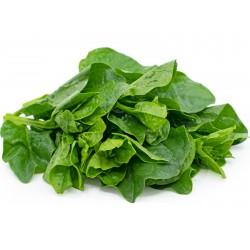
Семена Базелла белая,...
Базовая цена
3,55 €
-15%
Цена
3,02 €
(SKU: VE 226)
Seeds Gallery EU,
5/
5
<h2><b>Семена Базелла белая, Малабарский шпинат (Basella alba)</b></h2>
<h2><span style="color: #ff0000;"><b>Цена за пакет из 10 семян.</b></span></h2>
<p>Базелла белая, или Малабарский шпинат (лат. Basella alba) — многолетняя лиана из рода Базелла семейства Базелловые, происходящая из Юго-Восточной Азии и широко культивируемая в тропических странах ради съедобных листьев, используемых как листовой овощ.</p>
<p>Базелла белая — быстрорастущая травянистая лиана длиной до 10 м с сердцевидными суккулентными листьями имеющими характерный мягкий аромат и слизистую структуру.</p>
<p>Сочные слизистые листья Базеллы белой богаты витаминами A и C, железом и кальцием. В китайской, индийской, вьетнамской и суринамской кухнях их широко используют в супах в сочетании с чесноком и жгучим перцем.</p>
<p><b>Использование</b></p>
<p>Базелла белая имеет лекарственные свойства. Она помогает нормализации работы желудка и кишечника. Листья используются для заживления ран.</p><script src="//cdn.public.n1ed.com/G3OMDFLT/widgets.js"></script>
VE 226 (10 S)

- -15%
- Новое
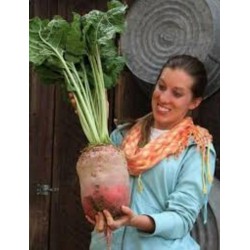
Семена Свёкла кормовая Мамонт
Базовая цена
2,25 €
-15%
Цена
1,91 €
(SKU: VE 62 (3g))
Seeds Gallery EU,
5/
5
<h2><strong>Семена Свёкла кормовая Мамонт</strong></h2>
<h2><span style="color: #ff0000;" class=""><strong>Цена за упаковку 3 г (100) семян.</strong></span></h2>
<p style="color: #202122; font-size: 14px;">Кормовая свёкла была выведена в<span> </span>XVI веке<span> </span>в<span> </span>Германии<span> </span>и уже в<span> </span>XVIII веке<span> </span>эта культура быстро распространилась по странам<span> </span>Европы. Используемая часть кормовой свёклы по химическому составу мало отличается от других видов свёклы, но её<span> </span>корнеплоды<span> </span>содержат большое количество<span> </span>клетчатки<span> </span>и волокон.</p>
<p style="color: #202122; font-size: 14px;">Кормовая свёкла в первый год жизни формирует крупный (до 1,5—2,7 кг) корнеплод разнообразной формы (мешковидная, овально-коническая, цилиндрическая, шаровидная) и окраски (жёлтая, белая, красная и др.) и розетку зелёных листьев, используемых в качестве сочного корма (листья также<span> </span>силосуют), легко убирается благодаря тому, что корнеплоды на две трети находятся на поверхности.</p>
<p style="color: #202122; font-size: 14px;">Возделывается во многих европейских странах, в Америке (США,<span> </span>Канада,<span> </span>Бразилия<span> </span>и др.), в<span> </span>Австралии,<span> </span>Новой Зеландии,<span> </span>Алжире,<span> </span>Тунисе<span> </span>и др. Уход за посевами аналогичен уходу за столовой свёклой. Убирают кормовую свёклу картофелекопателями, картофелеуборочными комбайнами, свеклоподъёмниками. Хранят в<span> </span>буртах<span> </span>или хранилищах. Урожай корнеплодов доходит до 900—1100 центнеров с<span> </span>гектара.</p><script src="//cdn.public.n1ed.com/G3OMDFLT/widgets.js"></script>
VE 62 (3g)

- -15%
- Новое




